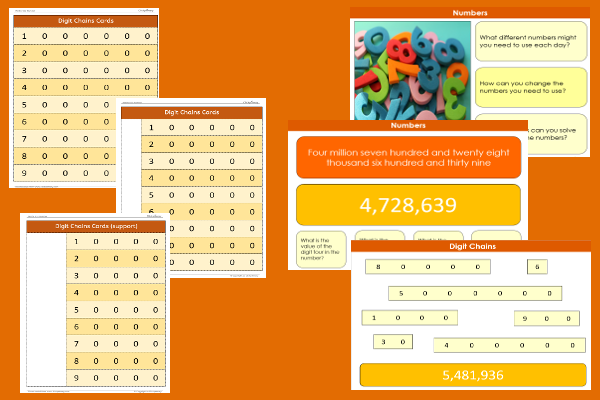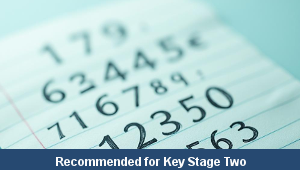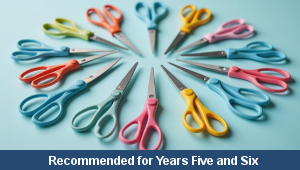Home > Key Stage Two > Maths > Number > Place Value > Number Millions
Digit Chains

This maths teaching pack for Key Stage Two gets the children to explore how to identify and record the place value of the digits that can be combined together to make some different numbers to ten million.
The class can select and combine cards showing millions, thousands, hundreds, tens and ones to make different numbers which can then be recorded in both words and digits.
Download this teaching pack including classroom activities and an interactive presentation to explore how to identify and record the place value of the digits that can be combined together to make some different numbers to ten million
Activities in this teaching pack include differentiated sets of cards to practise building some different numbers to ten million by combining groups of ones, tens, hundreds, thousands and millions to use when comparing the place values of the selected numbers.
The interactive presentation gets the children to explore and record the place value of the digits that can be combined to make different numbers to ten million.
This lesson is part of a maths scheme of work to get the children to investigate and compare numbers in millions by identifying the numerical place values of their matching sets of digits. There are teaching activities for shared learning, differentiated worksheets to support independent learning and interactive presentations to introduce concepts and key skills.
-

Maths Arithmetic Assessment
Assess abilities in solving arithmetic number problems for addition, subtraction, multiplication and division when working with informal and formal written calculations
-

Environment
Identify and describe some of the special landscapes and locations that can be found in the world and reflect on how they can be protected and preserved for the future
-

Silent Letter Words
Explore and illustrate the meanings and spellings of some different words with silent letters when using them in a range of topics and scenarios
-

Complaint Letters
Explain and model how to format and structure writing when composing letters of complaint about different issues and scenarios
